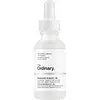What's inside
What's inside
 Key Ingredients
Key Ingredients

 Benefits
Benefits

 Concerns
Concerns

 Ingredients Side-by-side
Ingredients Side-by-side

Water
Skin ConditioningSodium Hyaluronate
HumectantPentylene Glycol
Skin ConditioningPropanediol
SolventSodium Hyaluronate Crosspolymer
HumectantPanthenol
Skin ConditioningAhnfeltia Concinna Extract
Skin ConditioningGlycerin
HumectantTrisodium Ethylenediamine Disuccinate
Citric Acid
BufferingIsoceteth-20
EmulsifyingEthoxydiglycol
HumectantEthylhexylglycerin
Skin ConditioningHexylene Glycol
Emulsifying1,2-Hexanediol
Skin ConditioningPhenoxyethanol
PreservativeCaprylyl Glycol
EmollientWater, Sodium Hyaluronate, Pentylene Glycol, Propanediol, Sodium Hyaluronate Crosspolymer, Panthenol, Ahnfeltia Concinna Extract, Glycerin, Trisodium Ethylenediamine Disuccinate, Citric Acid, Isoceteth-20, Ethoxydiglycol, Ethylhexylglycerin, Hexylene Glycol, 1,2-Hexanediol, Phenoxyethanol, Caprylyl Glycol
Erythritol
Humectant1,2-Hexanediol
Skin ConditioningPropanediol
SolventSodium Hyaluronate
HumectantCaesalpinia Spinosa Fruit Extract
Skin ProtectingChlorphenesin
AntimicrobialNiacinamide
SmoothingBetaine
HumectantAllantoin
Skin ConditioningKappaphycus Alvarezii Extract
Skin ConditioningHydrolyzed Collagen
EmollientAsiaticoside
AntioxidantGlycerin
HumectantAdenosine
Skin ConditioningXylitylglucoside
HumectantEthylhexylglycerin
Skin ConditioningAnhydroxylitol
HumectantButylene Glycol
HumectantDextrin
AbsorbentXylitol
Humectant3-O-Ethyl Ascorbic Acid
Skin ConditioningPanthenol
Skin ConditioningHydrolyzed Elastin
EmollientGlucose
HumectantPentylene Glycol
Skin ConditioningCynanchum Atratum Extract
Skin ConditioningSodium Chloride
MaskingMadecassoside
AntioxidantSodium Deoxycholate
Skin ConditioningDisodium Phosphate
BufferingSodium Phosphate
BufferingHydroxypropyltrimonium Hyaluronate
Sr-(Oligopeptide-91 Clostridium Botulinum Polypeptide-1)
Skin ConditioningPolysorbate 20
EmulsifyingSodium Acetylated Hyaluronate
HumectantHydrolyzed Hyaluronic Acid
HumectantLecithin
EmollientPhosphatidylcholine
EmulsifyingAcetyl Hexapeptide-8
HumectantPalmitoyl Tripeptide-1
Skin ConditioningHyaluronic Acid
HumectantSodium Hyaluronate Crosspolymer
HumectantCopper Tripeptide-1
Skin ConditioningHydrolyzed Sodium Hyaluronate
Skin ConditioningPotassium Hyaluronate
Skin ConditioningSh-Oligopeptide-2
Skin ConditioningSh-Polypeptide-1
Skin ConditioningSh-Polypeptide-2
Skin ConditioningErythritol, 1,2-Hexanediol, Propanediol, Sodium Hyaluronate, Caesalpinia Spinosa Fruit Extract, Chlorphenesin, Niacinamide, Betaine, Allantoin, Kappaphycus Alvarezii Extract, Hydrolyzed Collagen, Asiaticoside, Glycerin, Adenosine, Xylitylglucoside, Ethylhexylglycerin, Anhydroxylitol, Butylene Glycol, Dextrin, Xylitol, 3-O-Ethyl Ascorbic Acid, Panthenol, Hydrolyzed Elastin, Glucose, Pentylene Glycol, Cynanchum Atratum Extract, Sodium Chloride, Madecassoside, Sodium Deoxycholate, Disodium Phosphate, Sodium Phosphate, Hydroxypropyltrimonium Hyaluronate, Sr-(Oligopeptide-91 Clostridium Botulinum Polypeptide-1), Polysorbate 20, Sodium Acetylated Hyaluronate, Hydrolyzed Hyaluronic Acid, Lecithin, Phosphatidylcholine, Acetyl Hexapeptide-8, Palmitoyl Tripeptide-1, Hyaluronic Acid, Sodium Hyaluronate Crosspolymer, Copper Tripeptide-1, Hydrolyzed Sodium Hyaluronate, Potassium Hyaluronate, Sh-Oligopeptide-2, Sh-Polypeptide-1, Sh-Polypeptide-2
 Reviews
Reviews

Alternatives
Ingredients Explained
These ingredients are found in both products.
Ingredients higher up in an ingredient list are typically present in a larger amount.
1,2-Hexanediol is a synthetic liquid and another multi-functional powerhouse.
It is a:
- Humectant, drawing moisture into the skin
- Emollient, helping to soften skin
- Solvent, dispersing and stabilizing formulas
- Preservative booster, enhancing the antimicrobial activity of other preservatives
Ethylhexylglycerin (we can't pronounce this either) is commonly used as a preservative and skin softener. It is derived from glyceryl.
You might see Ethylhexylglycerin often paired with other preservatives such as phenoxyethanol. Ethylhexylglycerin has been found to increase the effectiveness of these other preservatives.
Glycerin is already naturally found in your skin. It helps moisturize and protect your skin.
A study from 2016 found glycerin to be more effective as a humectant than AHAs and hyaluronic acid.
As a humectant, it helps the skin stay hydrated by pulling moisture to your skin. The low molecular weight of glycerin allows it to pull moisture into the deeper layers of your skin.
Hydrated skin improves your skin barrier; Your skin barrier helps protect against irritants and bacteria.
Glycerin has also been found to have antimicrobial and antiviral properties. Due to these properties, glycerin is often used in wound and burn treatments.
In cosmetics, glycerin is usually derived from plants such as soybean or palm. However, it can also be sourced from animals, such as tallow or animal fat.
This ingredient is organic, colorless, odorless, and non-toxic.
Glycerin is the name for this ingredient in American English. British English uses Glycerol/Glycerine.
Learn more about GlycerinPanthenol is a common ingredient that helps hydrate and soothe the skin. It is found naturally in our skin and hair.
There are two forms of panthenol: D and L.
D-panthenol is also known as dexpanthenol. Most cosmetics use dexpanthenol or a mixture of D and L-panthenol.
Panthenol is famous due to its ability to go deeper into the skin's layers. Using this ingredient has numerous pros (and no cons):
Like hyaluronic acid, panthenol is a humectant. Humectants are able to bind and hold large amounts of water to keep skin hydrated.
This ingredient works well for wound healing. It works by increasing tissue in the wound and helps close open wounds.
Once oxidized, panthenol converts to pantothenic acid. Panthothenic acid is found in all living cells.
This ingredient is also referred to as pro-vitamin B5.
Learn more about PanthenolPentylene glycol is typically used within a product to thicken it. It also adds a smooth, soft, and moisturizing feel to the product. It is naturally found in plants such as sugar beets.
The hydrophilic trait of Pentylene Glycol makes it a humectant. As a humectant, Pentylene Glycol helps draw moisture from the air to your skin. This can help keep your skin hydrated.
This property also makes Pentylene Glycol a great texture enhancer. It can also help thicken or stabilize a product.
Pentylene Glycol also acts as a mild preservative and helps to keep a product microbe-free.
Some people may experience mild eye and skin irritation from Pentylene Glycol. We always recommend speaking with a professional about using this ingredient in your routine.
Pentylene Glycol has a low molecular weight and is part of the 1,2-glycol family.
Learn more about Pentylene GlycolPropanediol is an all-star ingredient. It softens, hydrates, and smooths the skin.
It’s often used to:
Propanediol is not likely to cause sensitivity and considered safe to use. It is derived from corn or petroleum with a clear color and no scent.
Learn more about PropanediolSodium Hyaluronate is hyaluronic acid's salt form. It is commonly derived from the sodium salt of hyaluronic acid.
Like hyaluronic acid, it is great at holding water and acts as a humectant. This makes it a great skin hydrating ingredient.
Sodium Hyaluronate is naturally occurring in our bodies and is mostly found in eye fluid and joints.
These are some other common types of Hyaluronic Acid:
Learn more about Sodium HyaluronateSodium Hyaluronate Crosspolymer is a type of hyaluronic acid. In fact, it is modified version of hyaluronic acid.
The structure of Sodium Hyaluronate Crosspolymer allows it to stay in the skin's top layer for a longer period of time. This allows for even more hydration and humectant action than hyaluronic acid.
These are some other common types of Hyaluronic Acid:
Learn more about Sodium Hyaluronate Crosspolymer